This was Day 7 of our safari. Raymond picked us up at the Coffee Farm after an early breakfast. We have a long drive ahead of us. We will leave the Ngorongoro Conservation Area, driving northwest, and enter the Serengeti with a stop at the Olduvai Gorge. Sometimes referred to as the “Cradle of Mankind”, this desolate and dry plateau marks the place where the Leakeys discovered the oldest known footprints of human beings. Many believe that this is where humanity first evolved. Over the next many millennia, humans spread northward into Europe, across Asia, into North America by way of the narrow channel between Siberia and Alaska, and thence south and east throughout North and South America.
We liked the Visitor Center displays, which provided a wonderful pictorial of the presumed changes in the Gorge over many centuries and the spread of mankind. I also enjoyed a few minutes of quiet reflection on a wind-blown bench looking down over the Gorge.
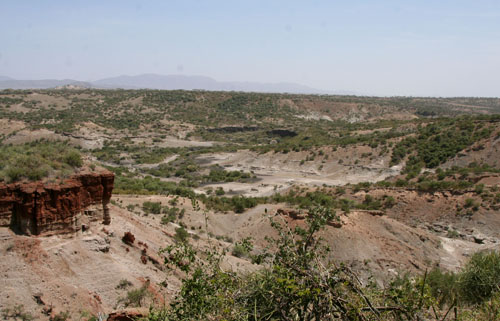
Centuries of erosion expose many layers of vari-colored rock and sediment marking the historic, one could say cataclysmic, changes that the Gorge has undergone.
When we were satisfied with our visit to the Gorge and its Visitors Center, we quickly ate our box lunches before embarking into the Serengeti. We expect to be on the road for about 6 hours before we reach our camp for the night, the Kensington Tented Camp. This Camp lies just outside the Serengeti National Park, by the west-central part of the Tanzanian portion of the Park.
As we enter the Serengeti, we note the dryness of the landscape. Even where there is ample grass, it is mostly brown. The road is dusty and the wind is always blowing. We protect ourselves from the dust of other Safarists as best we can, with Raymond ultimately breaking the turning mechanism on his driver’s side window as he constantly cranked it up for protection from dust and down for protection from the heat. There were some stranded vehicles here and there with efforts being made to revive them with fluid or pumped up tires. The courtesy of the driver/guides to one another was notable, with the exception of one particular company, whose vehicles invariably charged by at a high rate of speed with dust billowing in all directions. Here is our vehicle.
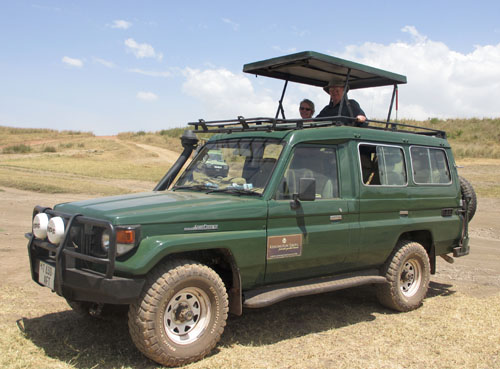
This is what we were hoping for. Animals abound, often in mixed groups, such as Ostriches and Thompson’s Gazelles.

We see the graceful Hartebeests in several locations.
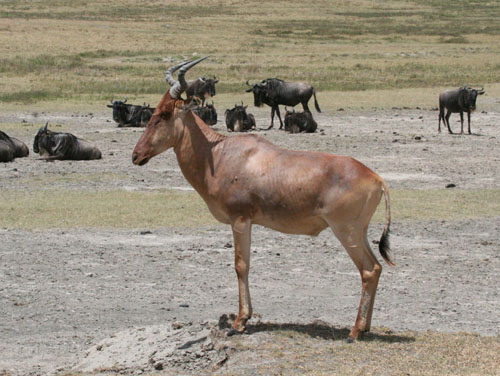
The first of several lovely little Pygmy Falcons perches near the road in an Acacia Tree.
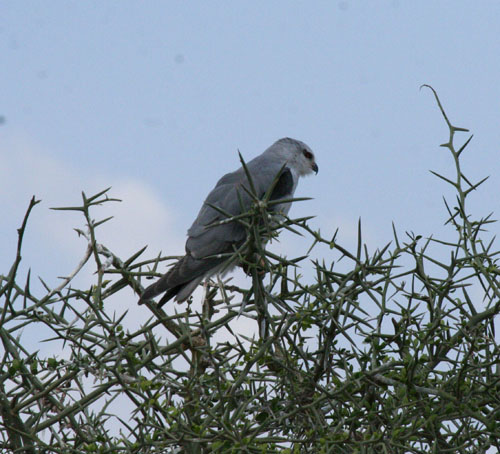
Topis occur sporadically on the landscape.
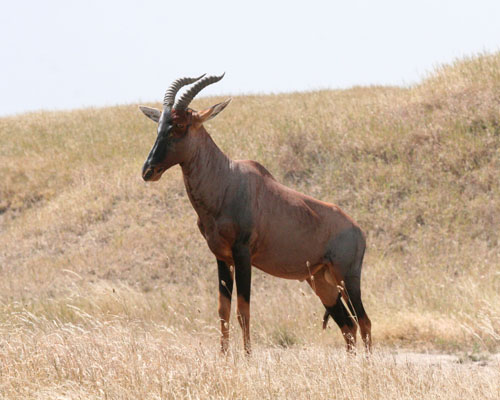
Dozens of ungainly Marabou Storks show up in trees around the waterholes, or on the wet shoreline.

The predominant species are the Zebras and the Wildebeests. They number into the many thousands, with far more Zebras than Wildebeests seen today. They are noisy and nervous as they jostle toward and into the water, ready to plunge away, knowing that the Lions know they need to go there. A Zebra kill lies under a tree by a waterhole, with Lions nearby.
Hippos crowd into reeking water holes (sewers).

The day grew long and we seemed to drive forever before jiggling over endless cow-paths and rocky, rutted stream crossings, to finally arrive at our Kensington Tented Camp. We were warmly received, and quickly found out why: we were the only guests. It felt a bit lonesome. Things did not go very well. The “shower” didn’t work, so, even after a long, hot, and dusty drive, we went without one that evening. The lights went out frequently. The water supply for the shower and the toilet (you don’t drink this water) malfunctioned. Dinner was good, and the staff tried their best to please. We felt well protected by the Camp Guard, but I am not convinced his weapon would stop a lion.

We could hear the lions and hyenas roaring during the night. You don’t leave the tent at night without hailing a guard. A few large insects showed up on the floor of our tent. But, hey, it’s all in a day’s safari.
The next morning, Day 8, dawned bright and beautiful and I worked on my bird list on the “veranda” while sipping the morning coffee that was brought to our tent.

The water supply has been restored, so we got wet. After a very good breakfast, we were off again on the road through the local village, and toward the entrance to the Serengeti Park. The birding was very good along this road and we saw quite a few new birds as we poked along toward the Gate.
Rollers, both Lilac Breasted and this Eurasian Roller, perch in conspicuous spots.

Elephants are everywhere. Impalas (boys and girls segregated) show off their lovely colors.
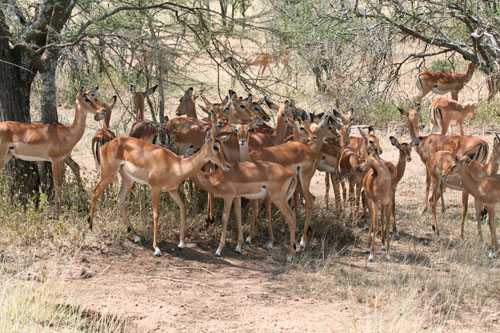
Lions, many with cubs, are quite common sights now.
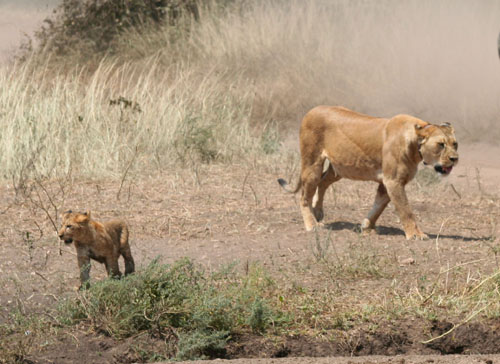
Later in the afternoon, we spot our first of several Leopards, always lounging in trees.

We can’t completely neglect the birds. This Double Banded Plover makes a pretty picture.
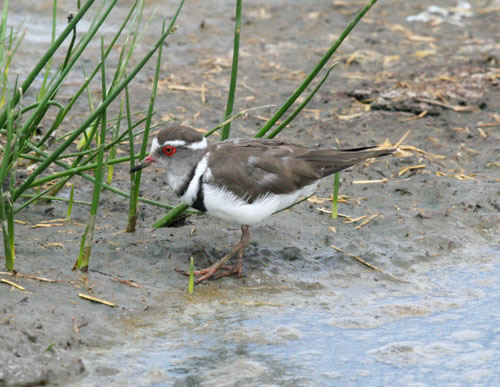
We endured another long and bumpy ride back to our Camp. Tonight there are two more guests there. The event of the night was a “cookout” in the wilderness away from the camp. First, Raymond got lost trying to find the way to the cookout. When we arrived at the designated tree, we were quite taken aback. The staff had set up a lovely “dining room” in the grass under the tree, with hanging lanterns, all in the middle of nowhere. We thoroughly enjoyed this bit of extravaganza. I can’t imagine how much work it all was for the camp staff. We got back to our tent quite late, exhausted from the long day on the dirt roads and the surprising ending.
